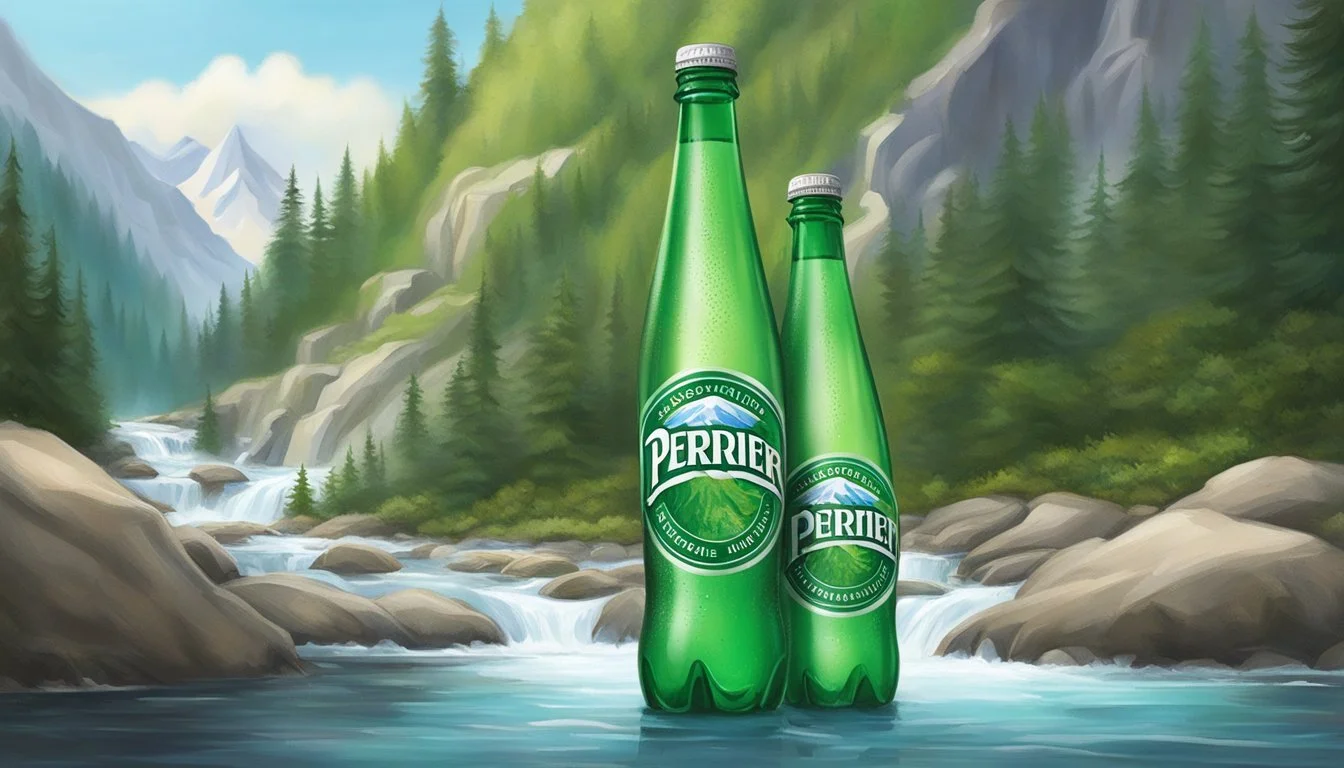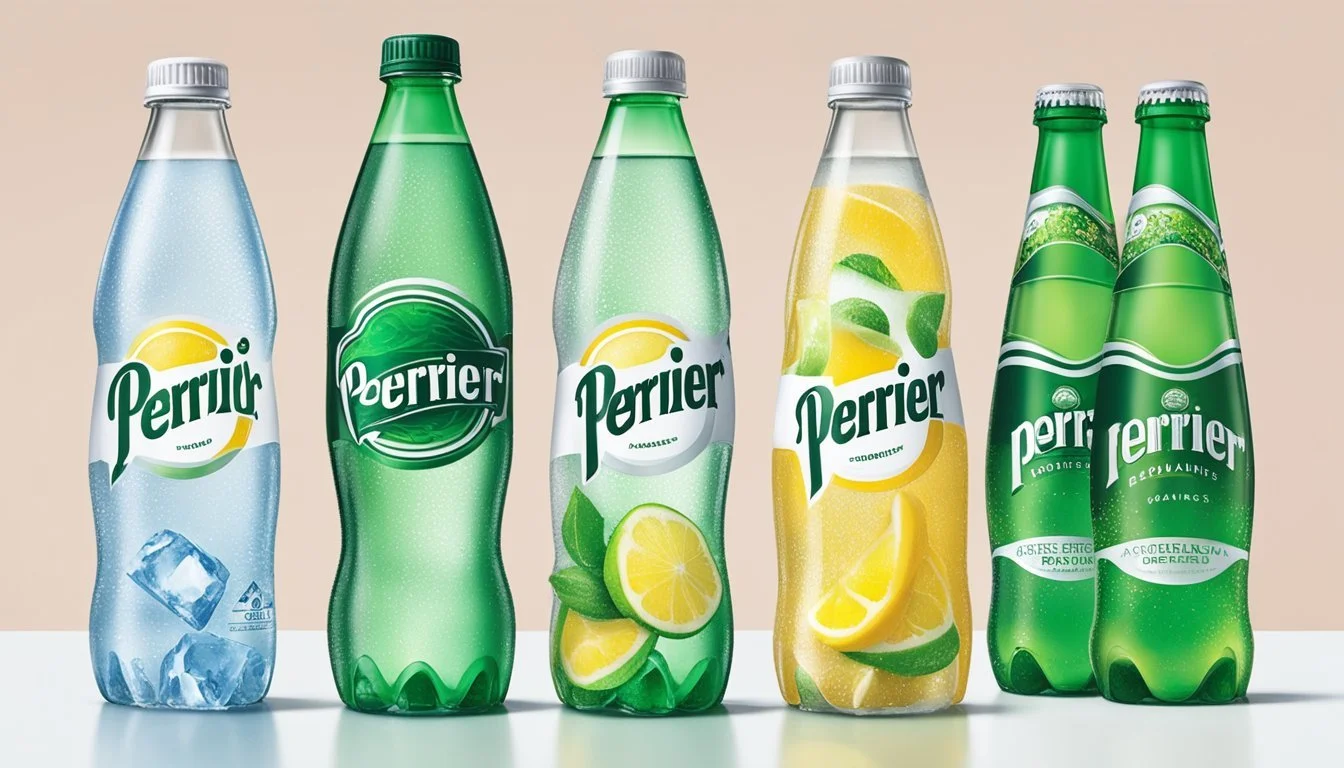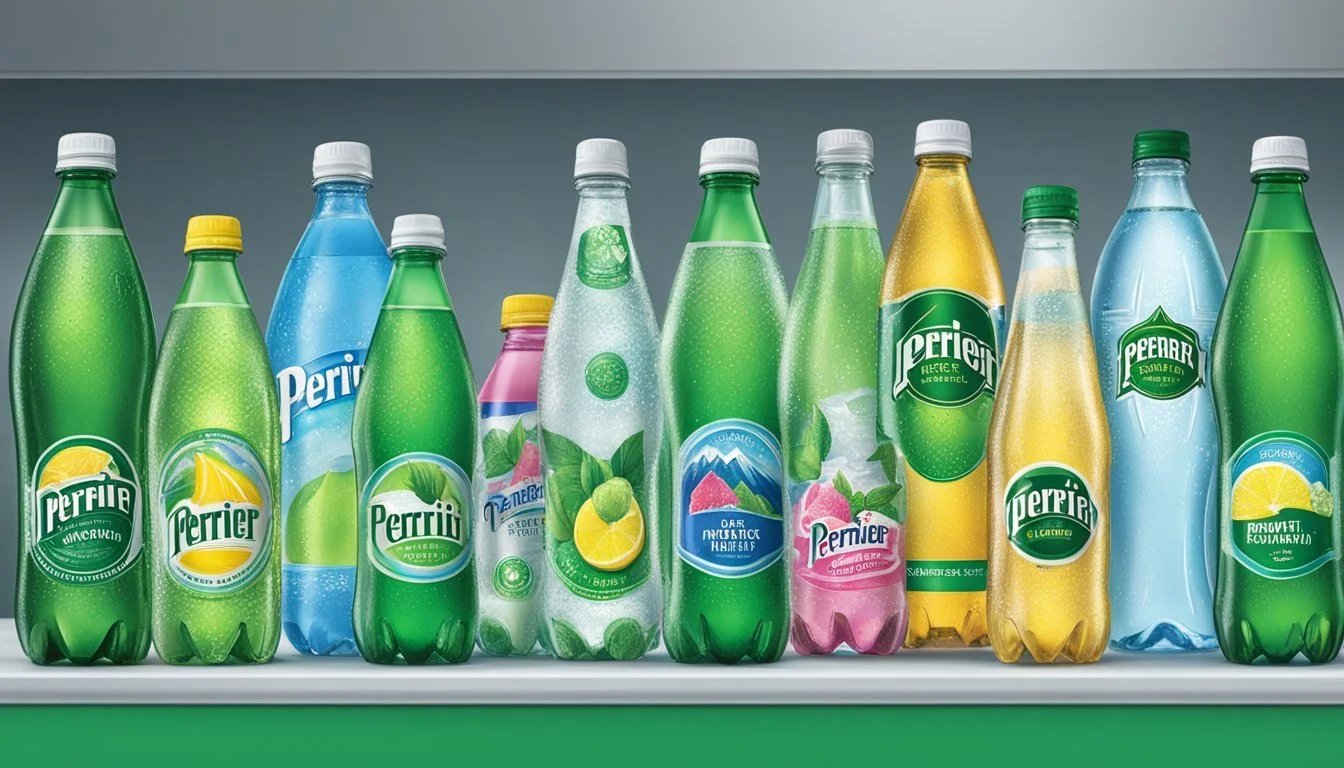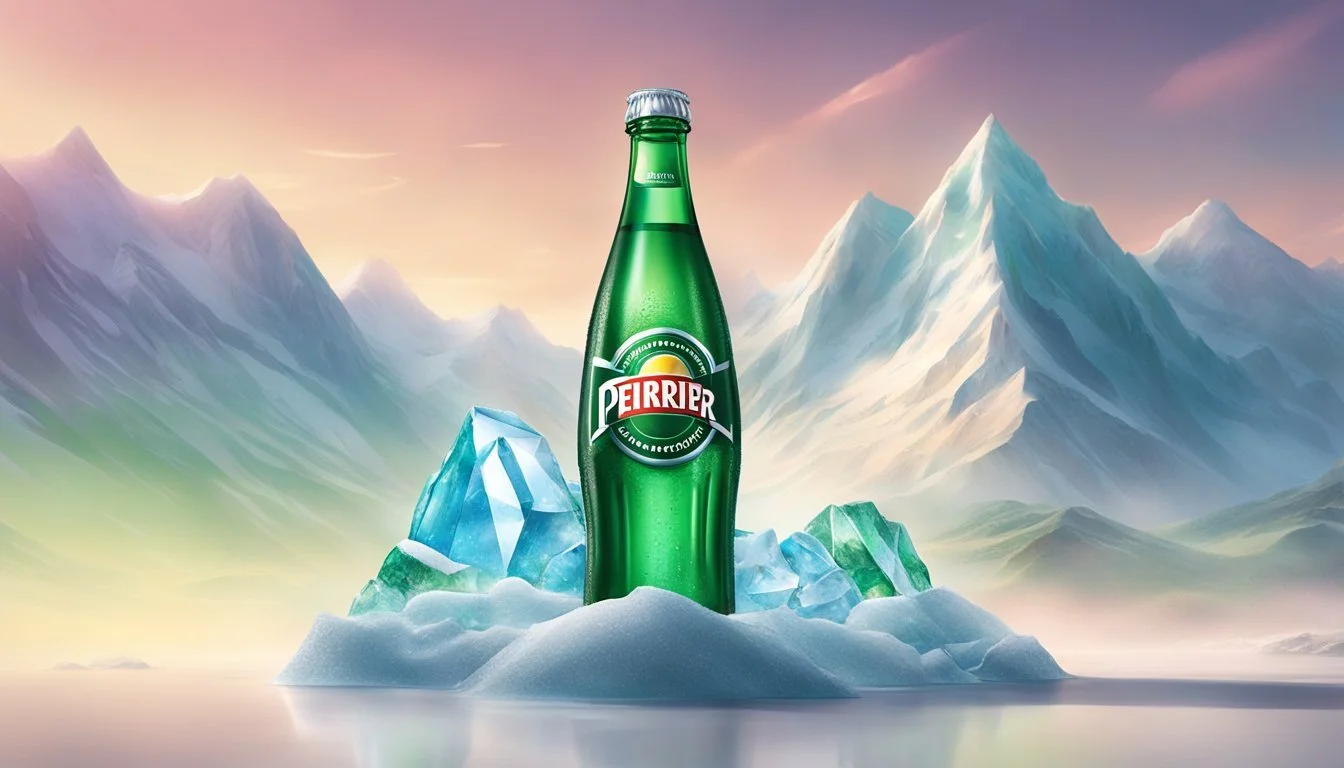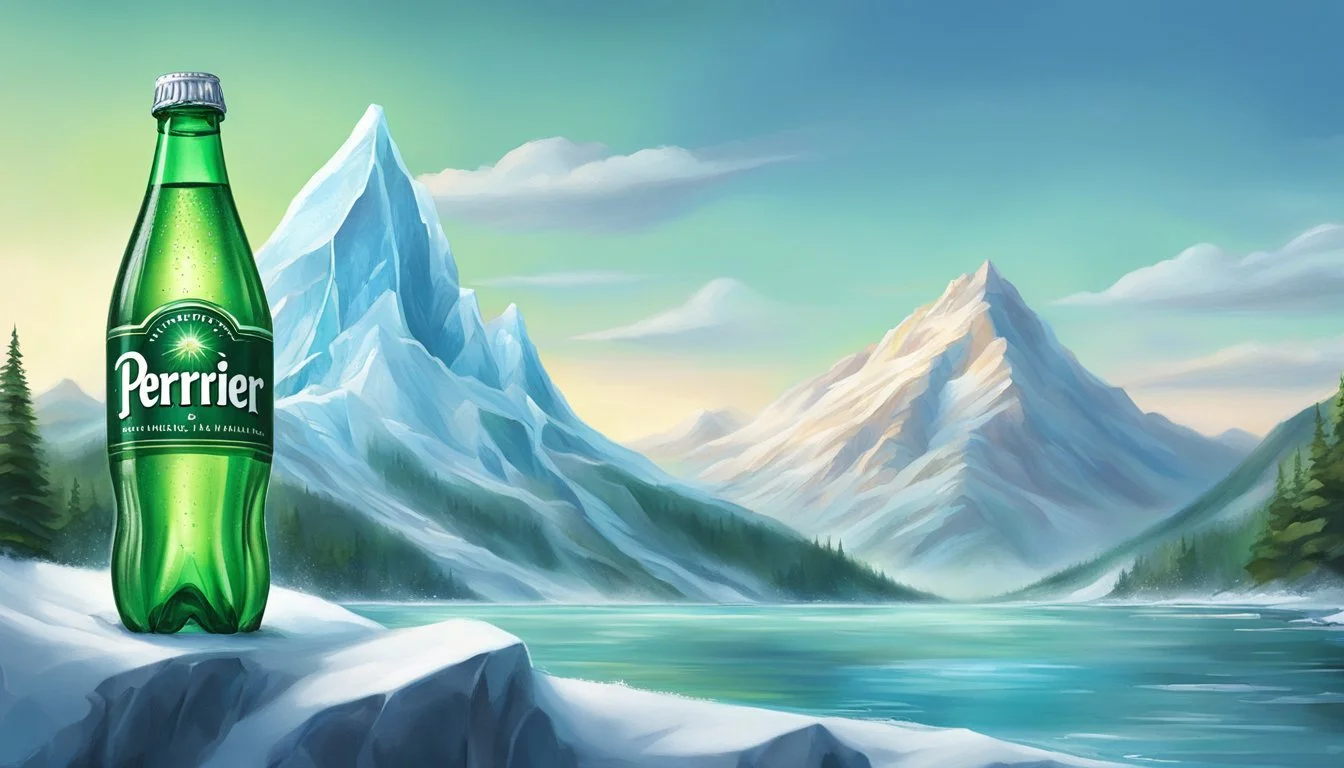Ice Mountain vs. Perrier
A Comparative Analysis of Bottled Water Quality
When assessing the merits of different bottled water brands, consumers often weigh factors such as taste, purity, source, and environmental impact. Ice Mountain and Perrier represent two distinctive choices within the market: Ice Mountain, known for its midwestern origins from natural springs, offers a straightforward and accessible hydration option. Perrier, by contrast, positions itself as a premium brand with naturally carbonated water sourced from Vergèze, France. Both brands have carved out niches but cater to different preferences and purposes.
The debate on which bottled water is superior isn't new, yet it remains a relevant discussion for health-conscious individuals and environmental advocates alike. Ice Mountain is often praised for its clean and refreshing taste, which is attributed to the brand's filtration and purification processes. Meanwhile, Perrier is recognized for its unique effervescence and mineral content, which gives it a distinct taste that many find enhances the experience of drinking water.
Choosing between Ice Mountain and Perrier may also transcend personal taste, reaching into environmental considerations. Consumers are increasingly aware of the ecological footprint of bottled water, including the energy used in production and the impact of plastic waste. These aspects, coupled with water source sustainability, further complexify the decision-making process when determining which bottled water to purchase.
Comparing Brands
In this section, one will find a detailed comparison of Ice Mountain and Perrier, focusing on their origins, market presence, and consumer loyalty. These factors play a significant role in determining the preference for one brand over the other.
Brand Origins
Ice Mountain originates from several sources in the Midwest United States and is a brand under Nestlé Waters, which is part of the larger Nestlé group. In contrast, Perrier is a French brand known for its naturally carbonated mineral water sourced from the Vergèze spring located in the Gard département.
Current Market Presence
Both brands have established a strong market presence globally, each targeting different consumer segments and preferences. Ice Mountain is widely available in the United States and is comparable to brands like Aquafina (owned by PepsiCo) and Dasani (owned by Coca-Cola), which offer purified drinking water. Perrier, with its iconic green bottle and distinct taste due to natural carbonation, aligns more closely with premium brands like Evian and is recognized around the world for its mineral content.
Ice Mountain:
Widely distributed in the United States
Competes with other purified water brands such as Aquafina and Dasani
Perrier:
Global distribution, with a stronghold in both European and American markets
Associated with premium mineral waters like Evian
Consumer Loyalty
Consumer loyalty often reflects trust and satisfaction with the product. Perrier enjoys a loyal customer base owing to its unique sparkling taste and upscale brand image. Ice Mountain gains loyalty through its regional appeal and consistency in delivering fresh tasting water. Both brands benefit from their parent companies, Nestlé and Nestlé Waters respectively, with Nestlé's resources potentially offering an extensive distribution network to Ice Mountain, fostering brand familiarity and loyalty.
Water Quality and Health
When comparing Ice Mountain and Perrier, understanding their water quality and potential health implications is crucial. Differences in mineral content and the presence of contaminants can significantly influence consumer choice.
Mineral Content and Benefits
Ice Mountain is primarily known for its spring water which contains various minerals like calcium, magnesium, and sodium. These minerals are naturally occurring and contribute to the water's taste and can replenish electrolytes in the body. The water is sourced from carefully selected springs, and its mineral composition is as follows:
Calcium: Beneficial for bone health
Magnesium: Supports muscle and nerve function
Sodium: Essential for fluid balance
Perrier, on the other hand, is a sparkling mineral water that is rich in calcium, magnesium, and bicarbonate. It comes from a natural spring in the south of France and undergoes a unique journey through limestone deposits, which enriches Perrier with a blend of minerals:
Calcium: 155 mg/L - beneficial for teeth and bones
Magnesium: 4.2 mg/L - aids in regulating muscle and nerve functions
Bicarbonate: 390 mg/L - can help maintain pH balance in the body
Health Risks Associated with Contaminants
The quality of bottled water is regulated to prevent health risks associated with contaminants like heavy metals and chlorine. Both Ice Mountain and Perrier adhere to strict quality control measures to ensure safety.
Ice Mountain undergoes a multi-step filtration process that includes the removal of potential contaminants such as lead, arsenic, and heavy metals, substances known for their health risks, including neurological effects and increased risk of cancer.
Perrier also takes extensive measures to maintain purity, routinely testing for contaminants like lead, arsenic, and chlorine—chemicals that can have adverse health effects if consumed in high amounts. They comply with the standards set by the World Health Organization (WHO), to prevent any potential health risks. Their bottling process ensures that the water is free from contamination while preserving its natural mineral content.
Environmental Impact
In the realm of bottled waters, both Ice Mountain and Perrier have distinct processes and materials that affect the environment differently. The implications of their production and disposal methods on the planet are critical considerations for eco-conscious consumers.
Bottling Processes and Eco-Friendliness
Ice Mountain, known to adhere to FDA and IBWA standards, sources water from springs and undertakes robust filtration to ensure safety and purity. However, the extraction of water resources and its bottling in plastic contributes to environmental strain. Although Ice Mountain's bottles are predominantly PET plastic, which is BPA-free and recyclable, the environmental impact is not negligible.
On the other hand, Perrier is often bottled in glass bottles, significantly reducing the potential for BPA-related concerns and enhancing its recyclability. Glass production, nonetheless, requires considerable energy and resources but tends to have a longer life cycle and can be recycled indefinitely without loss of purity or clarity.
Plastic Use and Recycling Challenges
Ice Mountain predominantly uses plastic bottles for water packaging. Despite being BPA-free, these bottles can still pose challenges to the environment, especially if they do not enter a proper recycling stream. Considering the broader industry issues of microplastic contamination, the implications of plastic usage extend to not just waste management concerns but also potential ecological contamination.
In contrast, Perrier's choice of glass packaging alleviates some of the environmental concerns associated with plastics. Glass can be seamlessly recycled without degradation of quality. Nevertheless, the challenge lies in ensuring that consumers have access to and participate in efficient recycling programs, as glass recycling rates lag behind that of plastics in many regions.
Recycling Statistics:
Plastic: Varies significantly by region; recovery rates are often below 30%.
Glass: More effectively recycled, with about 34% recovery rate in the U.S.
Both Ice Mountain and Perrier contend with the obstacles of packaging waste and the imperative of bolstering recycling efforts to mitigate environmental impacts.
Hydration and Usage
When considering Ice Mountain and Perrier, consumers weigh the hydration benefits and diverse usage scenarios of these two bottled water brands. Both are marketed to quench thirst, but they differ in their mineral content and carbonation.
Hydration Benefits
Ice Mountain is a still water derived from underground sources, and it's typically consumed for hydration purposes. Given its mineral composition, it aids in replenishing electrolytes that are lost during physical activity or dehydration. Perrier, on the other hand, is a sparkling mineral water with naturally occurring carbonation and distinctive mineral content. The effervescence in Perrier can provide a refreshing sensation which may encourage some people to drink more water, thus potentially improving their hydration status.
Ice Mountain:
Non-carbonated
Replenishes electrolytes
Perrier:
Carbonated
May enhance hydration through increased water consumption
Consumer Use Cases
Both waters have their distinct use cases. Ice Mountain is frequently chosen for everyday hydration needs and is suitable as an everyday refreshment, comparable to tap water. Consumers may prefer it during workouts or throughout their daily routine. Perrier's carbonation makes it a popular choice for consumers seeking a more upscale or distinct drinking experience, often used as a mixer in beverages or served as a non-alcoholic alternative at social gatherings.
Ice Mountain:
Ideal for everyday hydration
Suitable for workouts and daily routines
Perrier:
Favored for social events and as a mixer
Considered a premium beverage experience
Water Sources and Filtration
When comparing Ice Mountain and Perrier bottled waters, key differences arise from their water sources and the methods used to purify this essential resource. The water from which Ice Mountain and Perrier originate, as well as their distinct filtration processes, critically define their quality and taste.
Spring Water Sources
Ice Mountain draws its water from multiple springs located in the United States, primarily from the Midwest. These underground springs are typically replenished with water from rain and snow that filters down through layers of sediment and rock.
Location: Midwest, U.S.
Type: Underground spring
On the other hand, Perrier sources its water from a single, renowned spring in the French Alps named Vergèze. Renowned for its naturally carbonated, mountain spring water, Perrier's source offers a unique mineral composition that is a result of the water's journey through the limestone hills.
Location: Vergèze, French Alps
Type: Naturally carbonated mountain spring
Purification Methods
Ice Mountain implements a multi-step filtration process that typically includes reverse osmosis and other advanced filtering techniques. By doing so, they aim to achieve a consistent level of purity and taste in their products, labeling it as purified water.
Techniques: Reverse osmosis, advanced filtration
Label: Purified water
Perrier, given its single-source origin, undergoes minimal treatment, preserving its natural mineral content and carbonation. However, the water is subject to strict safety tests and is additionally treated with ultraviolet light to ensure disinfection without altering the taste.
Techniques: Ultraviolet light treatment
Label: Natural mineral water with added carbonation
Both brands utilize techniques like ozone treatment to ensure sanitation while maintaining the integrity of the water's original mineral profile. They prioritize safety and quality compliance respective to their distinct types of water offered—spring water for Ice Mountain and carbonated mineral water for Perrier.
Packaging and Accessibility
When comparing Ice Mountain and Perrier, it's essential to consider their packaging materials and the breadth of their accessibility. Both brands employ different materials for their bottles, which have various environmental impacts and consumer uses.
Bottle Materials
Ice Mountain predominantly uses plastic bottles for its water. These bottles are generally BPA-free, ensuring that the water is free from certain chemical contaminants. Plastic bottles are lightweight and convenient for consumers, and Ice Mountain emphasizes that its bottles are 100% recyclable.
Perrier, on the other hand, is widely recognized for its signature green glass bottles. Glass is an inert material that doesn't leach chemicals into the water, although it is heavier and may be less convenient for on-the-go consumption. Perrier also provides options in plastic bottles, which are recyclable as well.
Global Distribution
In terms of availability, Ice Mountain is primarily distributed within the United States, with a significant presence in the Midwest. Its distribution network in America ensures that Ice Mountain water is easily accessible in the states.
Perrier has a more global reach, with distribution in numerous countries around the world. The brand is synonymous with sparkling water and is often available in both upscale and common grocery outlets, making it globally recognizable and widely available. Its distribution extends beyond the United States to Europe, Asia, and more, making Perrier a more globally accessible product.
Comparative Taste Profiles
In examining Ice Mountain and Perrier bottled waters, one will find distinctive taste profiles influenced by varying mineral contents and consumer preferences.
Flavor Influence of Minerals
Ice Mountain:
Composition: Sourced as natural spring water, it contains minerals like calcium, magnesium, and sodium.
Taste: This mineral blend contributes to a crisp, clean taste, often described as refreshing.
Perrier:
Composition: A sparkling mineral water featuring a unique combination of minerals such as calcium, magnesium, and bicarbonate.
Taste: Perrier's higher mineral content provides a sharp, effervescent taste profile, notable for its zest and slight bitterness.
Preference Trends Among Consumers
Taste Preferences:
Ice Mountain: Generally well-received for its neutral taste, making it a go-to for everyday hydration without the flavor complexities.
Perrier: Favored for its distinctive bubbly sensation and strong mineral flavor, often preferred by those looking for a more pronounced palate experience or a mixer in beverages.
Market Trends:
Ice Mountain appeals to consumers seeking the familiarity and gentleness of still water.
In contrast, Perrier has carved a niche among consumers who value taste experience and sophistication in their choice of sparkling water.
Consumer Choices:
A matter of personal taste, influenced by individual preference for still or sparkling water and the desire for more or less pronounced mineral flavors.
Regulatory and Safety Standards
When choosing between bottled water brands such as Ice Mountain and Perrier, consumers may consider the regulatory and safety standards that govern their production and distribution. These standards are critical for ensuring that bottled water is safe to consume and meets consistent quality benchmarks.
Government and Industry Regulations
U.S. Food and Drug Administration (FDA): Both Ice Mountain and Perrier, like all bottled water sold in the United States, must comply with the FDA's standards. These regulations establish maximum levels of contaminants, including chemical, physical, microbial, and radiological substances allowed in bottled water. The FDA categorizes bottled water under the general heading of "food," and thus it must adhere to the Federal Food, Drug, and Cosmetic Act.
International Bottled Water Association (IBWA): While the FDA provides federal oversight, the IBWA offers additional guidelines and resources to the bottled water industry. The IBWA works in conjunction with the FDA to ensure that its members follow strict bottling, sourcing, and distribution practices.
Testing for Safety and Compliance
Testing Protocols: Bottled water companies regularly test their products to maintain compliance with regulatory standards. The sampling and testing must be performed by FDA-certified laboratories.
Contaminant Levels and Reporting: Regulatory bodies like the FDA and the Environmental Protection Agency (EPA) — which oversees the safety of public water systems — have established limits for contaminants in drinking water. Although the EPA's standards pertain to tap water, bottled water providers often use these as benchmarks for quality and safety.
Compliance Records: To assure continued compliance:
Documentation: Bottled water manufacturers must keep detailed records of the testing performed.
FDA Inspections: These records and the bottling facilities themselves are subject to periodic FDA inspections.
Consumer Awareness and Education
When choosing between bottled water brands like Ice Mountain and Perrier, consumers can benefit significantly from understanding marketing strategies and the importance of label transparency, along with the influence of social media platforms in shaping public opinion.
Understanding Labels and Marketing
Consumers often rely on the information provided on bottled water labels but interpreting this data correctly is vital. Bottles may give details about the source, such as spring or mineral water, and possibly the mineral content or presence of contaminants. Marketing plays a key role here, and knowing how the language and imagery on labels can influence purchasing decisions is essential for consumers. For instance, words like "pure" and "natural" are used persuasively, although they may not always be supported by substantial differences in water quality. Consumers should assess:
Source Information: Is the water drawn from a natural spring, or is it filtered municipal water?
Contents: What minerals are present, and what is the PPM (parts per million)?
Claims: Are there any health or quality statements, and are they verified by a third party?
The Role of Social Media
Social media, particularly platforms like Twitter, serves as a powerful information disseminator but also a marketing tool. Focused and strategic marketing campaigns on these platforms can impact consumer choices by highlighting specific product attributes or 'lifestyle' associations. Transparency in marketing on social media can foster trust and educate consumers about product specifics. However, consumers should approach social media claims with a critical eye; they should consider the source and look for corroborative evidence when assessing claims made about bottled water brands. Additionally, consumer reviews and discussions on social media can provide a broader perspective on a product's real-life reception.
Innovation and Future Trends
The bottled water industry stands at a pivotal juncture where innovation intersects with sustainability. Here, both Ice Mountain and Perrier are compelled to adapt to the emerging technologies and environmental demands shaping their future.
Emerging Technologies in Water Production
Ice Mountain and Perrier reflect the broader industry's exploration of advanced filtration and aseptic bottling methods to enhance purity and taste. These companies invest in high-tech filtration systems that not only exceed standard purification requirements but also retain beneficial minerals.
Micro-filtration: This process captures impurities on a microscopic scale, ensuring a clean product without altering the water's natural state.
Reverse osmosis: Widely adopted in the industry for its effectiveness in reducing dissolved substances in water.
Sustainability and Environmental Initiatives
The environmental footprint of bottled water has prompted Ice Mountain and Perrier to champion eco-friendly innovations.
Biodegradable Bottles: Both companies are exploring the use of biodegradable materials to reduce waste.
Recycling Programs: Encouraging consumers to recycle, with the aim of achieving higher recycling rates for their packaging.
Ice Mountain, sourced from springs, considers the ecosystem around its sourcing sites, implementing measures to preserve the environment. Perrier, known for its carbonation, investigates methods to reduce emissions during production. These initiatives not only reflect corporate responsibility but also resonate with environmentally conscious consumers.
Conclusion
Ice Mountain and Perrier offer distinct experiences for bottled water consumers. Ice Mountain is positioned as a regional favorite in the Midwest, typically marketed for its affordability and accessibility. It’s a good choice for everyday hydration needs without extra frills. Perrier, on the other hand, is recognized for its carbonation and mineral content, as well as its association with a lifestyle of sophistication.
Ice Mountain Perrier Source Spring water Spring water with added carbonation Cost Economical Premium Purpose Daily hydration Refreshing beverage, mixer Packaging Plastic bottles Glass and plastic bottles
For those seeking simple, still water and value-for-money, Ice Mountain could be the preferred option. Consumers who enjoy sparkling water with a zest and are looking for a premium brand might be more inclined towards Perrier.
Tips for choosing between Ice Mountain and Perrier:
Consider the occasion: daily drinking (Ice Mountain) vs special occasions (Perrier).
Assess preference for still or sparkling water.
Think about environmental impact; glass bottles are generally more eco-friendly.
Consumers should weigh these factors according to their personal needs and preferences. Both brands hold their place in the market, with Ice Mountain serving those who prioritize cost and Perrier catering to a niche market that prefers bubbly mineral water. Each offers a different taste and function, leaving the choice ultimately to the individual's taste and occasion for use.



